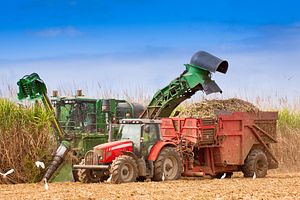Having wrapped up two of Australia’s long-negotiated free trade agreements with South Korea and Japan, the Coalition government looks set to capitalize on the momentum with a third – this time, with China. The Treasurer Joe Hockey and Minister for Trade Andrew Robb took the opportunity to push the trade agenda forward in Beijing this week as they took part in the inaugural Australia-China Strategic Economic Dialogue in Beijing.
The key takeaway for Australia was an agreement reached with Xu Shaoshi, the Chairman of China’s National Development and Reform Commission, to create an Investment Co-operation Framework. Though the details are yet to be finalized, the goal is to encourage greater two-way investment between the two countries by focusing on specific projects or areas for investment. One potential area raised in the meeting with Xu was for more Chinese investment in infrastructure as part of the government’s “Developing Northern Australia” initiative.
Speaking at a media conference, Hockey said the focus was “to deepen the everyday engagement between China and Australia.” Less clear is how the framework will fit in with the ongoing negotiations for an Australia-China Free Trade Agreement. If the FTA is about setting the rules, then the framework seems to be about injecting political will into the trade and economic relationship.
This takes place amid growing speculation that a conclusion to the ongoing FTA negotiations will be announced during Chinese President Xi Xinping’s visit to Australia for the Brisbane G20 summit in November. Both sides seem committed to having the framework concluded before Xi’s visit and Robb was more than optimistic about the end-of-year deadline. “The conclusion was it is doable this year,” he told reporters. “Both governments are determined to bring it to completion this year.”
With a deadline set, the focus will be on the details. For Australia, two of the key stumbling blocks have been with agriculture and services. China has historically placed a high priority on food security and agricultural self-sufficiency, which naturally leaves little room for Australian exporters. But with a shortage of arable land and limited water access, Beijing will find it difficult to feed its growing middle class without boosting agricultural productivity significantly. Increased imports could fill this gap. According to a recent report by the Economist Intelligence Unit, the share of Australia’s farm exports going to China could reach as high as 59 percent in 2030, up from just 12 percent in 2007. Whether Chinese leaders will welcome such high numbers is the question.
Services are undoubtedly the least developed area of the Australia-China trade relationship. In 2013, Australia exported just $6.88 billion in services to China, most of which was concentrated in education and tourism. Pushing for a broad and comprehensive FTA will be vital for Australia to diversify away from mostly exporting minerals and resources to delivering the types of services that could drive greater innovation and productivity in the Chinese economy. One potential area appropriately raised by the Australian treasurer was finance.
As part of its efforts to internationalize the renminbi (RMB), China has been pushing for greater direct trading of its currency in global markets. Australia and China agreed in April to work towards establishing a clearing and settlement arrangement for the RMB in Sydney. Speaking before the Australian Chamber of Commerce in Shanghai on Thursday, Hockey expressed renewed confidence that a “designated clearing bank for renminbi trading in Australia” would be up and running by the end of the year. Along with the Investment Co-operation Framework, this could serve as an important litmus test for progress towards an FTA.
For China, though, the most significant obstacle remains Australia’s investment regime. As I wrote last week, scrutiny by the Foreign Investment Review Board (FIRB) of Chinese investment, particularly for state-owned enterprises (SOEs), remains a major sticking point in the relationship. Beijing is reportedly seeking to raise the minimum threshold for triggering an FRIB review to $1 billion as part of the FTA, and also wants equal treatment to be granted to Chinese SOEs. Recent comments by Hockey suggest that the government may be moving closer to Beijing’s position. According to the Financial Times, he has recently welcomed bids from Chinese SOEs in the planned $100 billion privatization of Australian state assets such as ports and electricity networks.
The treasurer is fond of reminding people that under the Coalition government, Australia is “open for business.” In concluding a free trade agreement with China, he will certainly have his work cut out for him.

































